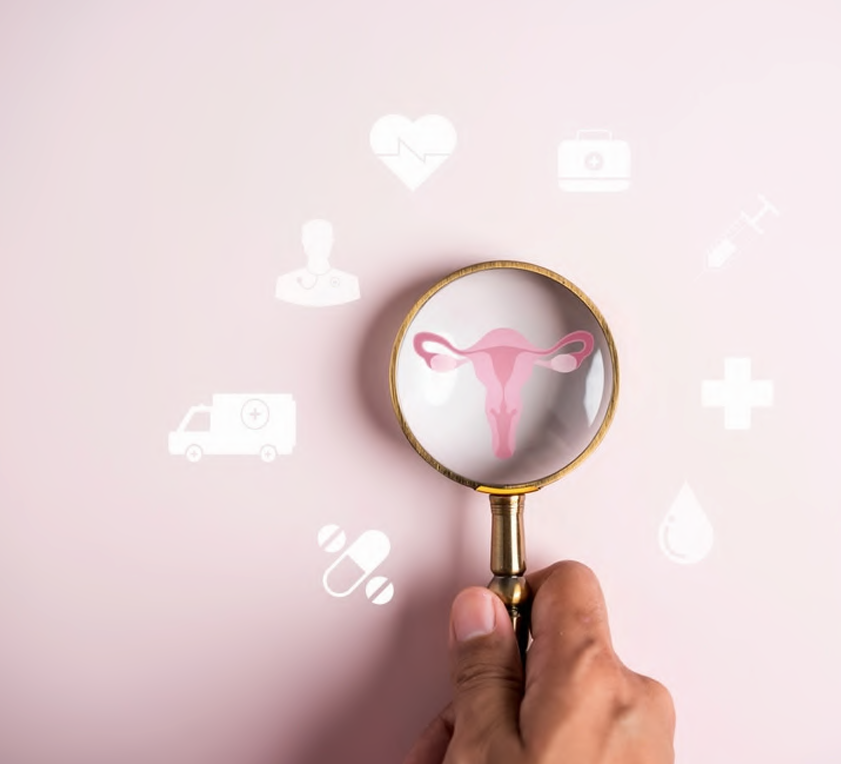“If a boy touches you, you will get pregnant.” That is what many mothers tell their daughters to keep them away from boys. As we grow older, we are told, “Don’t get pregnant outside of wedlock” or “You can have a career, but don’t wait too long to have kids, you’ll be too old.” These warnings make it seem as if having a baby is the most natural and straightforward thing in the world. But for a growing number of young women, the reality is different. We have long been led to believe that only older women face infertility issues, but science and data now suggest otherwise. The rising number of younger women dealing with infertility proves that this is no longer the case.
The World Health Organization (WHO) defines infertility as a disease of the reproductive system, marked by the failure to achieve pregnancy after 12 months or more of regular, unprotected intercourse. This affects both men and women. Primary infertility occurs when a person has never achieved a pregnancy, while secondary infertility refers to cases where a previous pregnancy has occurred, but subsequent attempts are unsuccessful. For many younger women, infertility has become a growing concern, driven by medical conditions, lifestyle choices, and environmental factors.
Fertility, often thought to be most robust in a woman’s twenties and early thirties, is now facing a curious shift. Recent studies and discussions have raised the question: are younger women becoming less fertile than they were in previous generations? T Research suggests that a variety of lifestyle, environmental, and societal factors may be affecting fertility rates in women earlier than expected. Let’s unpack what the data shows and explore the possible reasons behind this trend.
Environmental Factors
One of the significant factors contributing to declining fertility in younger women is the rise of environmental toxins. Numerous studies have linked chemicals found in everyday products like plastics, cosmetics, and even food packaging to hormonal imbalances that affect reproductive health. Chemicals like phthalates, bisphenol A (BPA), and pesticides have been shown to disrupt endocrine function, which can lead to fertility problems.
According to a 2021 study by the Endocrine Society, early and prolonged exposure to endocrine disrupting chemicals (EDCs) is thought to reduce ovarian function and increase the risk of reproductive disorders in women, including younger women.
These chemicals can interfere with the body’s normal hormonal balance, making it more difficult for women to conceive, even during their peak fertile years. The Endocrine Society reports that exposure to endocrine-disrupting chemicals has contributed to a 40% decline in sperm counts globally since the 1970s and may similarly affect female fertility.
The Changing Landscape of Fertility
Historically, women in their twenties were thought to be at the peak of their fertility. According to research by the American Society for Reproductive Medicine (ASRM), women under 30 typically have about a 25% chance of getting pregnant each month. However, recent studies indicate that younger women are now facing reproductive challenges that were once more commonly associated with older age groups.
A 2019 study published in Human Reproduction found that fertility rates among women in their twenties have been declining across several developed countries, including the UK, US, and parts of Europe. In fact, data from the UK’s Office for National Statistics (ONS) shows that the fertility rate for women aged 20-24 fell by nearly 5% between 2018 and 2021. This drop, although subtle, raises important questions about the health and lifestyle of younger women today.
Lifestyle Choices and Health Implications
While environmental factors are partly to blame, lifestyle choices also play a significant role. Poor diet, high stress levels, lack of exercise, and the increasing prevalence of smoking and alcohol consumption among younger women are all contributing factors.
Diet plays a crucial role in reproductive health, and studies show that the modern Western diet, often high in processed foods and sugars, can have negative effects on fertility. A 2020 study published in The American Journal of Clinical Nutrition found that diets rich in whole grains, fruits, vegetables, and healthy fats are associated with better reproductive outcomes, while poor diets are linked to lower fertility rates.
Additionally, high levels of stress, often caused by work pressures, financial burdens, or social expectations, are believed to disrupt hormone levels, particularly cortisol and oestrogen, both of which are vital for healthy reproductive function. A survey conducted by Fertility Network UK revealed that stress and anxiety are common among younger women trying to conceive, with nearly 30% of respondents citing stress as a major barrier to getting pregnant.
The Impact of Delayed Childbearing
One of the most striking trends in recent decades is the tendency for women to delay childbirth. With more women pursuing higher education and career advancement, many are choosing to postpone motherhood until their thirties or even forties. This shift, while empowering, has also contributed to a misconception that fertility remains stable in younger years, when in fact fertility begins to decline gradually from the mid twenties onward.
A 2022 report by the British Fertility Society noted that the average age of first-time mothers in the UK has risen from 26 in 1976 to over 30 in recent years. While this does not directly affect fertility in one’s twenties, the widespread belief that there is plenty of time to conceive later in life may contribute to missed opportunities for early interventions in cases of undiagnosed fertility issues. The same report found that nearly 10% of women aged 25-29 in the UK are now seeking medical help for fertility issues, up from just 5% in the early 2000s.
Technology’s Role in Preserving Fertility
Given the declining fertility trends among younger women, many are turning to technology to preserve their reproductive options. Egg freezing has gained popularity as a way for women to delay motherhood without losing the chance to have biological children later in life. According to HFEA (Human Fertilisation and Embryology Authority), the number of women choosing to freeze their eggs has doubled in the UK since 2013.
However, egg freezing comes with its own set of financial and medical challenges, and it is important for women to be informed about the risks and limitations. While egg freezing offers hope, it should not be viewed as a guarantee, as the success rate of pregnancy using frozen eggs declines with age.
While fertility has historically been viewed as something that declines with age, younger women today are facing challenges that previous generations did not. Environmental toxins, lifestyle choices, and societal shifts have all contributed to a more complex reproductive landscape. For those considering motherhood, it is vital to understand the factors that may be affecting fertility earlier than anticipated and to seek medical advice if issues arise. As research continues to shed light on these trends, the conversation around fertility needs to include younger women so that they can take proactive steps to protect their reproductive health.
It is crucial for women to receive support in taking charge of their fertility and motherhood choices while being empowered to pursue thriving careers, as this enables them to balance personal and professional aspirations, make informed decisions about reproductive health, and feel confident in their ability to succeed in both areas without sacrificing one for the other. This support fosters a sense of autonomy, reduces stress associated with societal pressures, and ensures that women can fully engage in both their careers and family planning on their own terms







